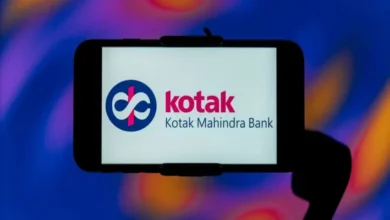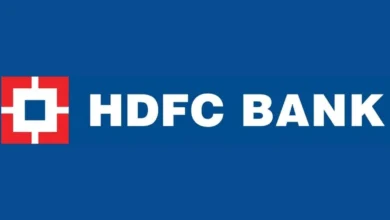But there was one big problem: the lack of a seamless link between restaurants and delivery partners.
Vaibhav Khandelwal, then working for another company had discussed the idea of a B2B logistics platform with Abhishek Bansal, a friend from IIT-Delhi.
Today, Shadowfax has a network of over 100,000 delivery partners that cater to different needs of the logistics ecosystem. Vaibhav says they have operated over 4,000 light commercial vehicles across 500+ cities in India.
The focus on B2B
Shadowfax serves the logistics needs of verticals like food, grocery, pharmacy, and ecommerce. It offers a comprehensive solution from the first-mile movement to door-step delivery.
The biggest brands in the market, including Amazon, Flipkart, Swiggy, Zomato, 1Mg, Big Basket, Myntra, McDonald’s, Samsung, and Unilever, are on Shadowfax’s client list. The logistics startup competes with the likes of Letstransport, Delhivery, and Rivigo to name a few.
But how did the founding duo finalise the plan? They began by conceptualising a Swiggy-like idea. “We didn’t pursue it as we didn’t see the unit economics. We wanted to build a super-strong business model and focus on B2B. So I would work in my office (Systems 2 Data) till 10 pm, and after that, until 2 am, I would build the app, backend, and dashboards of Shadowfax,” says Vaibhav Khandelwal, Co-founder and CTO of Shadowfax.
They built everything with “application and trial and error”. The idea was that Shadowfax would act as an aggregator of delivery partners.
“Different businesses require fulfilment support, and having their own fleet isn’t feasible for each one. This service can be outsourced, and we wanted to be that provider,” Vaibhav says.
Technology at Shadowfax solves deeper problems in the express logistics domain, across food, grocery, pharmacy, and ecommerce segments. It helps deliver shipments across categories, ensuring cost optimisation and a superior and consistent user experience.
“We build algorithms to optimise the routes for our delivery partners; we use AI to forecast demand patterns and process real-time location streams to ensure that we deliver 98 percent+ shipments within their SLA,” Vaibhav says.
The team first developed the Shadowfax Partner App, a crowdsourced model to onboard delivery partners. With this app, the need for the usual practice of hiring full-time contracted delivery partners became redundant.
The app could capture the real-time location of delivery boys, broadcast orders (just like Ola/Uber), and get timely order status updates. “I personally worked on it after my office hours and later took help from a remote freelancer. It took us around two months to build the first MVP,” Vaibhav says.
The team focused on continuously iterating the product on the basis of real-time feedback from delivery partners. The major feature built next was the Payouts visibility to partners, which solved one of their major problems (as most were from the unorganised sector).
“According to me, the best way to configure the next set of features is to talk to customers directly, empathise with their problems, and find solutions to fix them,” Vaibhav says.
The team kept adding features and were doing releases almost thrice a week. Vaibhav says they had launched the business in the pre-JIO era, and internet connectivity and costly plans proved a hindrance in app adoption among delivery partners.
The biggest challenge was getting a predictable number of needed delivery partners for different models since this was a unique model.
“We received complaints from delivery partners that the app consumed a lot of battery and tried to resolve the issue with technological innovations,” Vaibhav says.
He adds that the initial tech challenges included figuring out how to budget the right time between product development and technological improvements. Also, initially, a lot of product decisions were taken based on gut feeling, which often resulted in full-fledged products that didn’t scale.
“We learnt how to better plan an MVP and validate the problem statement before taking it up for product development,” Vaibhav says.
The Shadowfax team figured out the MQTT protocol (earlier used for satellite communication) and its implementation in Android<>Server communication. This helped in capturing real-time locations of partners even with 2G and patchy network and minimal battery consumption.
“We figured out OSRM, an open-source alternative to ETA calculation that allowed us to better configure our routing algorithms and do away with the need of Google Maps APIs,” Vaibhav says.
He adds that they learnt that as a new player it was important to ensure that the product creates trust in the user. Being transparent with information and having a feedback forum was extremely important to get market acceptance during scaleup.
Vaibhav explains that as a logistics unit backend processes seem more important than the UI/UX of the product. However, when they went to market, the team realised that “customers evaluate the brand basis the UI/UX and one needs to put equal focus on those aspects too”.
“The launch of UPI and the JIO revolution were eureka moments for us. A large number of infrastructural problems regarding networks and payments were resolved with the wide adoption of these platforms.”
Peer learning in the Bengaluru tech network helped Shadowfax streamline operations.
“In the initial days, we used to message tech leaders from Flipkart, Myntra, and Amazon over LinkedIn to discuss our challenges over a breakfast. Those hour-long discussions gave us a lot of insights. Hackathons, both internal and external, allowed us to get some good ideas that became a part of our roadmap,” Vaibhav says.
Amid the coronavirus pandemic, Shadowfax had to work on safety measures for both, the customers and delivery partners. The team tapped technology to build in processes that would help the team stay productive and motivated amid the global health crisis.
“We built and incorporated an AI-based mask and sanitiser detector that works by analysing selfies of delivery partners. We also used location intelligence to identify which of our riders were living (or doing deliveries) near a containment zone and to identify risk levels basis their past deliveries,” Vaibhav says.
Vaibhav says logistics is a constantly evolving sector. Sure from day one that the product needed to be the core focus, the Shadowfax team now runs bi-weekly sprints in which the product team interacts with all relevant stakeholders to plan new initiatives.
The team rolls out features to power users first, takes their feedback and then scales the product after relevant changes.
“Our next trigger of growth will be to double this number within a couple of years, reaching customers in every corner of the country. Considering the depth of the India market and its potential, we can grow 10x in the next four years and fulfil our dream of creating a million micro-entrepreneurs in the country,” Vaibhav says.
Source: Yourstory




